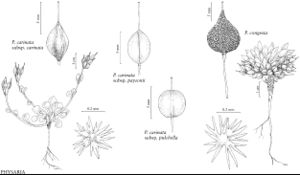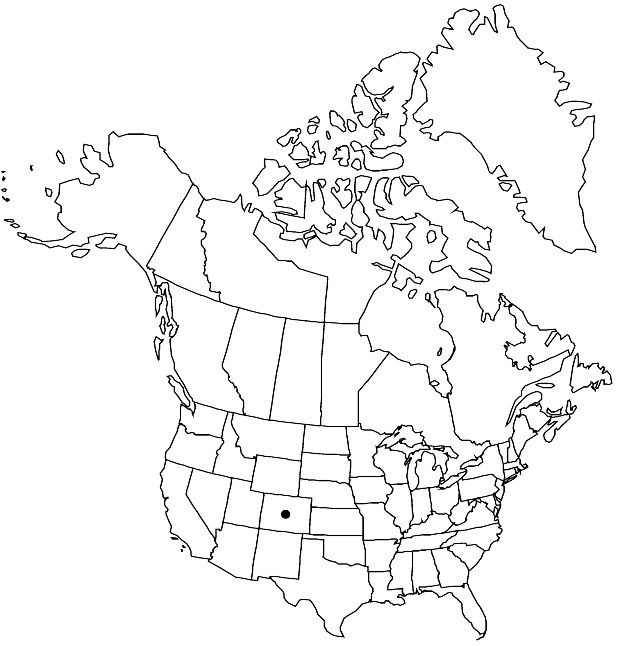Physaria congesta
Novon 12: 322. 2002.
Perennials; (relatively diminutive, strongly condensed); caudex (buried), simple or branched, (stout, thatched, thickened with persistent leaf-bases); densely pubescent, trichomes (appressed, stiff), 4-rayed or 5-rayed, rays fused at center, (mostly bifurcate). Stems simple or few from base, decumbent to ascending, (arising laterally from a tight hemispherical tuft of leaves), to 0.15 dm. Basal leaves similar to cauline, (erect, surfaces silvery). Cauline leaves (ascending, subsessile); blade linear-oblanceolate, (0.6–) 0.8–1.3 (–1.5) cm, margins entire, (apex acute to narrowly obtuse). Racemes strongly congested, (often sessile or nearly so, lateral to leaves). Fruiting pedicels (erect or ascending, straight to slightly curved), 3–6 mm. Flowers: sepals (loosely erect), narrowly oblong, 3–4 mm; petals spatulate, 5–6 mm. Fruits ovate, compressed (latiseptate) on margins and apically, 4–5 mm; valves pubescent, trichomes densely appressed; ovules 4 per ovary; style 1–1.5 mm. Seeds plump.
Phenology: Flowering Apr–May.
Habitat: Barren knolls with pinyon-juniper
Elevation: 1800-2100 m
Discussion
Of conservation concern.
Physaria congesta is found on white, decomposed shale of the Thirteenmile Creek Tongue of the Green River Formation.
Selected References
None.
Lower Taxa
"not" is not a number. "elongated" is not a number."thick" is not a number."dm" is not declared as a valid unit of measurement for this property.

